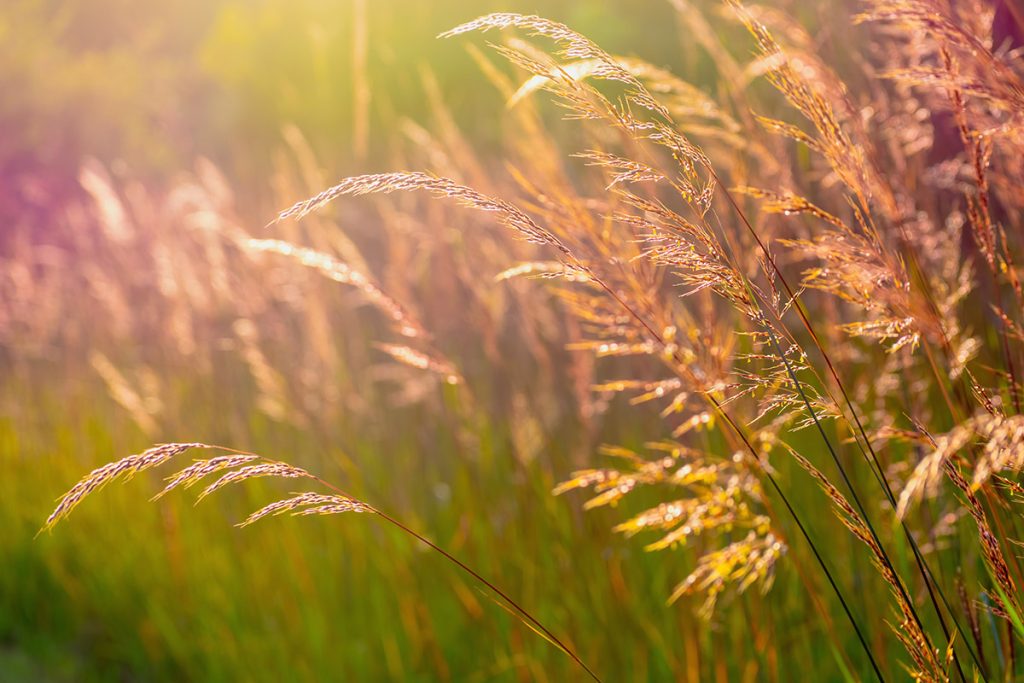
Through the Conservation Reserve Program (CRP) and other conservation efforts, vulnerable soil that is critical to our country’s agricultural future can be effectively restored. There are many CRP practices that can be implemented to reduce soil erosion and enhance soil health on your farmland. But grass establishment, in particular, provides a number of improvements to your land’s soil.
Planting grass crops like switchgrass, Canada wildrye, and big bluestem offers a wealth of environmental benefits such as better water quality, increased wildlife habitat, and important cover for more vulnerable species. Due to their fibrous roots, grasses are especially effective at protecting and improving the health of the soil.
But what are the specific benefits of grass crops for your soil? Here, we will touch on just some of the ways growing grass on your CRP land can promote your soil’s health.
Provides organic matter
Soil organic matter, consisting of plant and animal remains in the process of decomposition, offers several benefits for your soil. It increases your soil’s fertility, improves the structure of the soil, and helps rebuild topsoil, which can take between 500 and 1,000 years to form naturally.
The thin, fibrous roots of grass plants are decomposed to create organic matter. They are easily accessible to organisms like bacteria, fungi, and insects that break down organic materials underground. During this breakdown, nitrogen and other nutrients are released that can be used as food sources by other organisms within the soil.
The roots, leaves, and stems of grasses also provide important shelter for animal and insect species that live in the ground. Since perennial grasses die back and allow their deep root systems to form new organic matter every year, they are a key element of soil regeneration.
Prevents erosion
Both the roots and the blades of grasses are effective mitigators of soil erosion. Since the roots of grass crops are so thin, complex, and widespread, they help hold vulnerable soil together and make it more resilient to weather and other damaging factors.
Additionally, grasses act as cover crops for the soil, as well as other vulnerable plant and animal species. This protective cover helps shield the soil from air pollution, wind and rain erosion, and runoff. Some grasses can even help prevent erosion and restore soil in areas where wildfires have ransacked the land because their complex root system can survive fires.
Retains water
Water retention is important to ensure that soil is productive, healthy, and stable. The widespread and porous roots of grasses help break up the soil and create paths for water to seep through, increasing water retention in the ground.
In addition, the organic material produced by decomposing grass roots can also cause large amounts of water to be retained within the soil. This helps to maintain the soil’s structure and health while also reducing nutrient runoff to nearby waterways.
Boost your soil health with grasses
Establishing grasses on your farmland is one of the simplest CRP practices you can implement on your land to increase your soil’s health. Grasses are inexpensive, easy to grow, and widely available.
In addition to its soil benefits, grass establishment also creates wildlife habitat for grassland and game bird species, improves nearby water quality, and removes harmful CO2 from the atmosphere through carbon sequestration.
At All Native Seed, we offer a multitude of NRCS-compliant CRP mixes that can increase the health of your soil. Our seed mixes incorporate native perennial grasses so that, by establishing these seed mixes on your land, you can reap the benefits of grasses on your soil.
Our sister company, FDCE, can even assist with the planting and management of your grasses, to ensure your conservation project is successful. Contact us today to learn more about how ANS and FDCE can help with your grass establishment.
